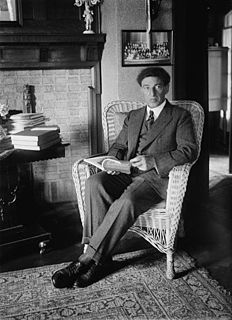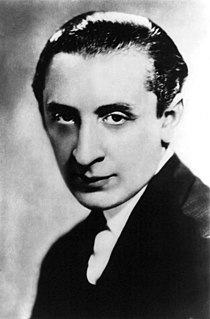
Josef Lhévinne was a Russian pianist and piano teacher. Lhévinne wrote a short book in 1924 that is considered a classic: Basic Principles in Pianoforte Playing. Asked how to say his name, he told The Literary Digest it was lay-VEEN.

Josef Casimir Hofmann was a Polish American pianist, composer, music teacher, and inventor.

Theodor Leschetizky was a Polish pianist, professor and composer born in Łańcut, then Landshut in the kingdom of Galicia and Lodomeria, also known as Austrian Poland, a crownland of the Habsburg Monarchy.

Nikolai Karlovich Medtner was a Russian composer and pianist. After a period of comparative obscurity in the twenty-five years immediately after his death, he is now becoming recognized as one of the most significant Russian composers for the piano.

Vladimir von Pachmann or Pachman was a pianist of Russian-German ethnicity, especially noted for performing the works of Chopin, and also for his eccentric on-stage style.

Emil Paur was an Austrian orchestra conductor.

Ossip Salomonovich Gabrilowitsch was an American pianist, conductor and composer.
Lubka Kolessa was a classical pianist and professor of piano.

Duo-Art was one of the leading reproducing piano technologies of the early 20th century, the others being American Piano Company (Ampico), introduced in 1913 too, and Welte-Mignon in 1905. These technologies flourished at that time because of the poor quality of the early Phonograph. Between 1913 and 1925 a number of distinguished classical and popular pianists, such as Ignace Paderewski, Josef Hofmann, Percy Grainger, Teresa Carreño, Aurelio Giorni, Robert Armbruster and Vladimir Horowitz, recorded for Duo-Art, and their rolls are a legacy of 19th-century and early 20th-century aesthetic and musical practice. The recording process – using a piano wired to a perforating machine – was unable to capture the pianist's dynamics automatically. These were added by a recording technician, who manipulated hand controls to notate the dynamics onto the recording 'master'. Thus, post-recording editing was required to produce the finished performance – usually a joint effort by the recording technician and the pianist themself, who approved the final product. Thus, these recordings do represent the overall style of these great artists and are a good representation of their live performances.

Fanny Davies was a British pianist who was particularly admired in Beethoven, Schumann, Brahms, and the early schools, but was also a very early London performer of the works of Debussy and Scriabin. In England, she was regarded as the 'successor' of Arabella Goddard, though her style and technique differed from Goddard's considerably.
Alexander Borisovich Goldenweiser, was a Soviet and Russian pianist, teacher and composer.

Konstantin Nicolayevich Igumnov was a Russian pianist and the teacher of many Russian pianists.

Alfred Reisenauer was a German pianist, composer, and music educator.

Variations on a Theme from Carmen are a set of variations composed and performed by the Russian-American pianist Vladimir Horowitz. They are based on the Gypsy Dance from Georges Bizet's opera Carmen (1875).

The Russian-American classical virtuoso pianist Vladimir Horowitz was a recording artist for over 60 years; beginning in 1926 on a piano roll system for Welte-Mignon, then with audio recordings, starting in 1928 for the Victor Talking Machine Company, later RCA Victor. Horowitz continued to record for a variety of record labels throughout his life. Between 1962 and 1973 he recorded for Columbia Masterworks In 1975, Horowitz returned to RCA, with which he recorded a series of live recitals. For the last years of his life, between 1985 and 1989, Horowitz recorded for Deutsche Grammophon. Horowitz's final recording, with Sony Classical, was completed in November 1989, four days before his death. This final recording consisted of repertoire that he had never previously recorded. His discography contains numerous albums and compilations of works by a variety of composers. Horowitz has also appeared in several video items, most of these were produced in the later years of his life.

Gisella Grosz, originally Gizella Grosz was a Hungarian classical pianist.
Nikolai Lopatnikoff was a Russian-American composer, music teacher and university lecturer. He composed some works of the neoclassical music. These pieces featured fast, furious Allegro molto that included in some cases snare drumming and also soft music for cello. These style alternate fast and furious with quiet and solemn, legato strings giving way to a quiet passage that ends with a loud drum.



















